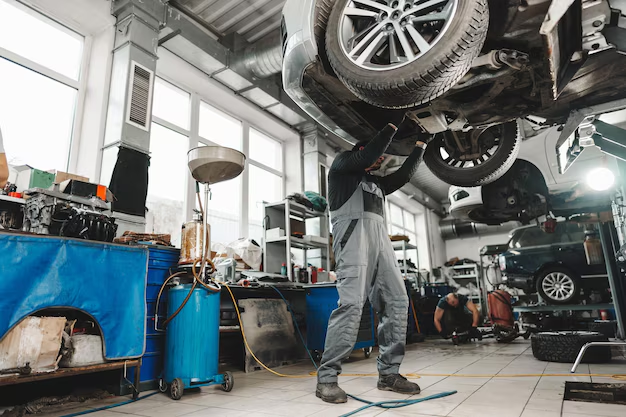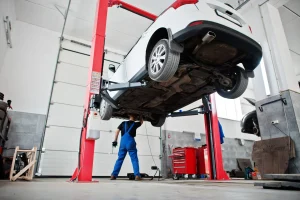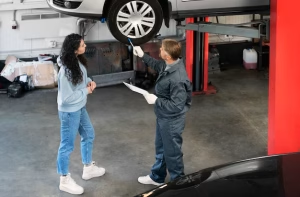Owning a car means taking responsibility for its upkeep. While it’s tempting to rely on professionals for every issue, many car repairs and maintenance tasks are straightforward enough to be handled by vehicle owners themselves. DIY car repair not only saves money but also provides a sense of accomplishment and the confidence that comes with learning new skills. Whether you’re a seasoned car owner or a beginner, this guide covers essential DIY car repair tips that can help you keep your vehicle in top shape.
The Benefits of DIY Car Repair
There are numerous advantages to performing car repairs yourself. The most obvious benefit is the cost savings. Professional auto repairs can be expensive, particularly when it comes to labor costs. By handling basic repairs at home, you can save hundreds of dollars annually. DIY car repair also gives you a deeper understanding of how your car works, helping you recognize potential issues before they become serious problems.
Additionally, completing repairs yourself can give you a sense of satisfaction and pride. Whether it’s changing your oil or fixing a small electrical issue, knowing that you’ve handled the job yourself is rewarding. Plus, you’ll have the freedom to choose when to do the repairs, avoiding long waits at the mechanic’s shop.
Essential Tools for DIY Car Repairs
Before diving into DIY car repair, it’s important to have the right tools. While some jobs may require specialized equipment, most basic repairs can be handled with a standard toolkit. Below are some essential tools you should have in your garage:
- Wrench and Socket Set: These are necessary for removing bolts and nuts. Having a variety of sizes will ensure that you can tackle most repairs.
- Jack and Jack Stands: To safely lift your car when working underneath it, you’ll need a jack to raise the vehicle and jack stands for support.
- Screwdrivers: Both flathead and Phillips screwdrivers are essential for removing screws and components in your car.
- Pliers: Pliers are useful for gripping, bending, or cutting parts.
- Torque Wrench: This tool ensures that bolts are tightened to the proper specifications, which is critical for many repairs, including wheel installation and engine work.
- Oil Drain Pan: When changing the oil, an oil pan will help you catch the old oil safely.
Having these basic tools in your garage will make it easier to handle a wide range of car repairs without needing to visit a mechanic.
DIY Car Repair Safety Tips
Before starting any repair, safety should always be your top priority. Here are some important safety tips for DIY car repair:
- Work in a Well-Ventilated Area: Always work in an area with plenty of ventilation to avoid inhaling fumes from exhaust, oil, or coolant.
- Use Protective Gear: Wear gloves to protect your hands from oil, sharp edges, and other harmful substances. Safety glasses are also a good idea, especially when working with chemicals or power tools.
- Use Jack Stands: Never work under a car that is only supported by a jack. Always use jack stands to secure the vehicle properly and prevent accidents.
- Disconnect the Battery: When working on the electrical system, it’s important to disconnect the car’s battery to avoid any shock or electrical accidents.
Common DIY Car Repairs
While some car repairs may require professional expertise, many issues can be fixed at home. Here are some common DIY car repairs that most vehicle owners can handle with a little time and effort:
1. Changing the Oil
Regular oil changes are crucial to maintaining engine performance. Changing the oil yourself is one of the simplest and most cost-effective repairs. The process involves draining the old oil, replacing the oil filter, and adding new oil. This task can be completed with basic tools in under an hour and helps keep the engine lubricated and running smoothly.
2. Replacing Air Filters
The air filter is essential for preventing dirt and debris from entering the engine. Over time, the filter can become clogged, affecting the engine’s performance and fuel efficiency. Replacing the air filter is an easy task that requires minimal tools. Simply remove the old filter, replace it with a new one, and ensure it is securely in place.
3. Replacing Wiper Blades
Worn-out wiper blades can reduce visibility during rain or snow, making it dangerous to drive. Fortunately, replacing wiper blades is an incredibly simple task. Lift the wiper arm, remove the old blade, and install the new one. This can be done in just a few minutes and is an affordable fix that can improve driving safety.
4. Changing Spark Plugs
Spark plugs are responsible for igniting the fuel mixture in your engine. Over time, they can become dirty or worn, leading to engine misfires, rough idling, and decreased fuel efficiency. Replacing the spark plugs is a relatively simple process that involves removing the old plugs with a socket wrench and installing new ones. It’s an effective way to improve engine performance and fuel economy.
5. Replacing Brake Pads
The brake pads are one of the most important safety components of your vehicle. Over time, they wear down and need to be replaced. Replacing brake pads involves lifting the car, removing the wheels, and replacing the worn-out pads. While this repair requires more time and effort, it’s manageable for most DIY enthusiasts and can save you money on professional brake services.
6. Changing the Battery
A dead battery is a common issue, and replacing it is a straightforward process. First, ensure that the car is off, then disconnect the negative terminal followed by the positive terminal. Remove the old battery and replace it with a new one, ensuring that the terminals are properly reconnected. A new battery will restore power to your vehicle and keep it running smoothly.
7. Fixing Minor Dents and Scratches
While major body damage requires professional repair, minor dents and scratches can often be fixed at home. For small dents, there are kits available that can help you pop the dent back into shape without damaging the paint. For scratches, touch-up paint can be applied to cover up the marks and restore your car’s appearance. These repairs are quick and inexpensive, improving your car’s value and appearance.
When to Call a Professional
While DIY car repair can save you money, there are times when it’s best to call a professional. If the issue is complex or involves specialized systems like the transmission or engine, it’s usually better to leave it to the experts. Additionally, if you’re unsure about a repair or lack the necessary tools, it’s important to seek professional help to avoid causing further damage.
Conclusion
Do-it-yourself car repair is a valuable skill that every vehicle owner can benefit from. By learning how to troubleshoot and perform basic repairs, you’ll save money, gain useful knowledge, and keep your car running smoothly for years to come. Simple tasks like changing the oil, replacing the air filter, and fixing the wiper blades are all manageable for beginners and can be done at home with minimal tools. For more complex repairs, knowing when to call in a professional ensures that your car stays in top condition without causing further issues. With the right approach, DIY car repair can be a rewarding and cost-effective way to take care of your vehicle.



